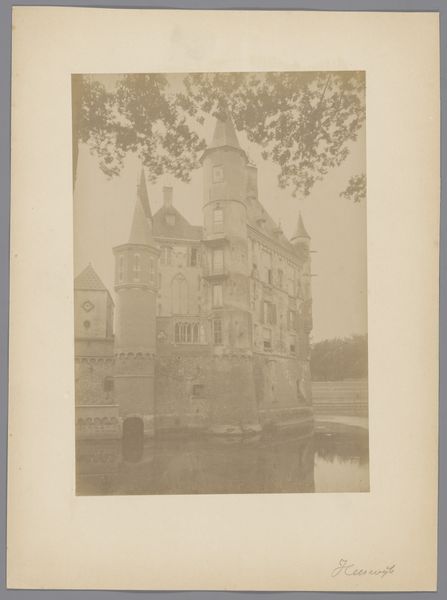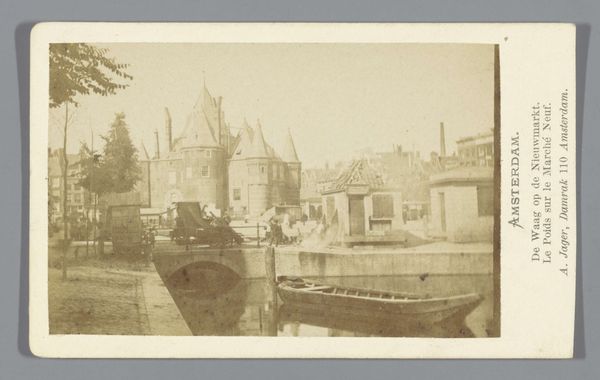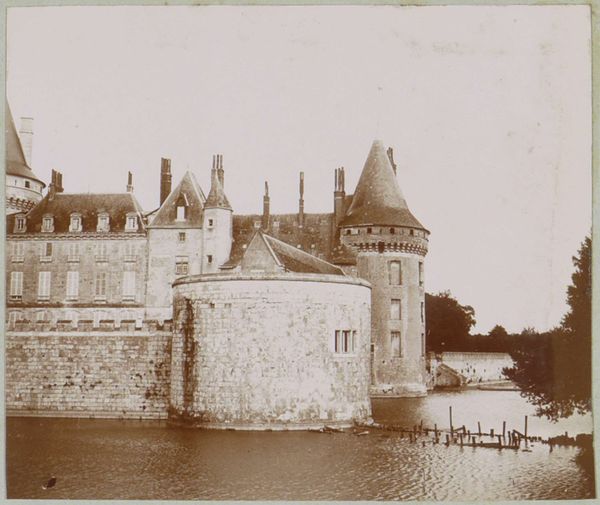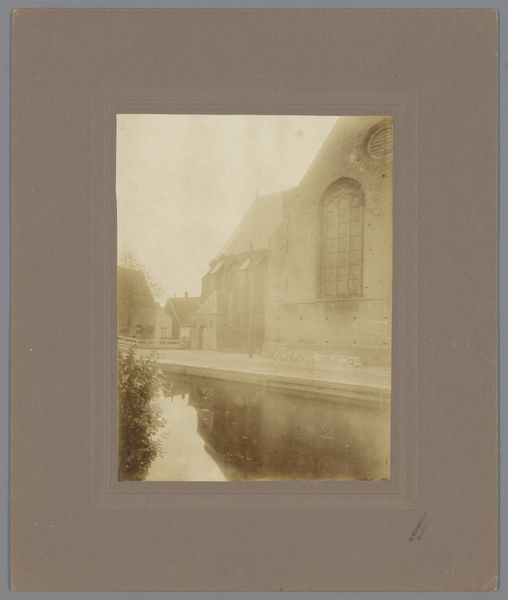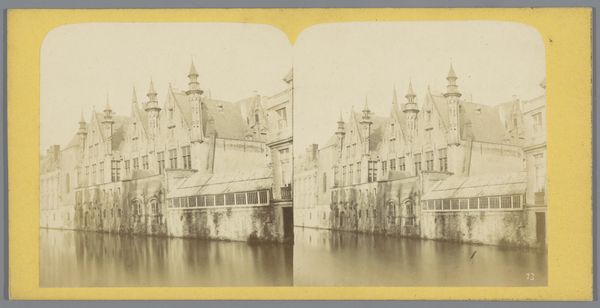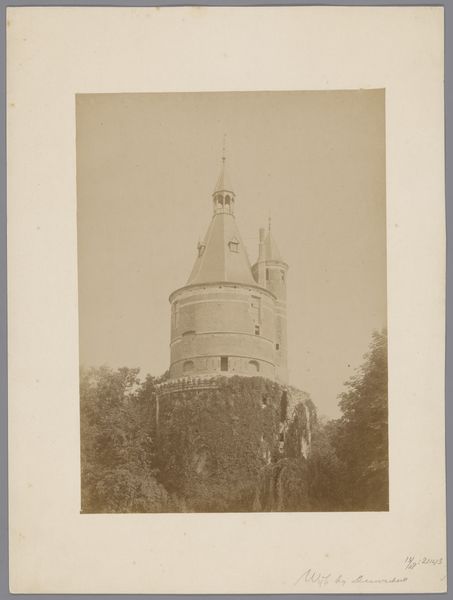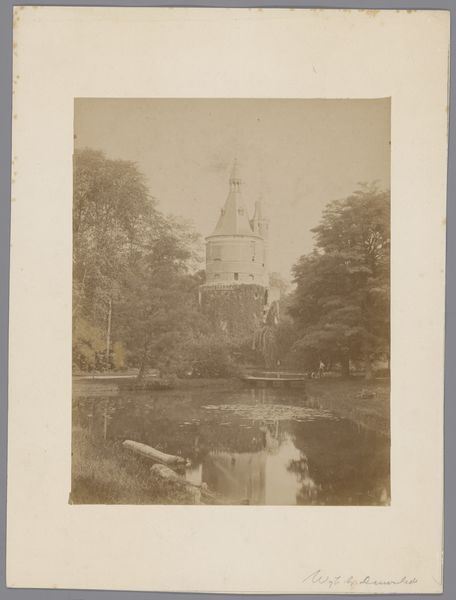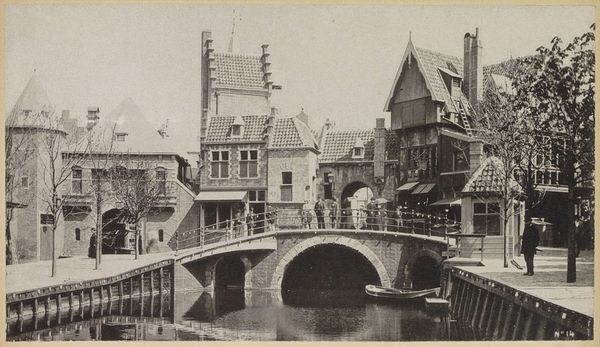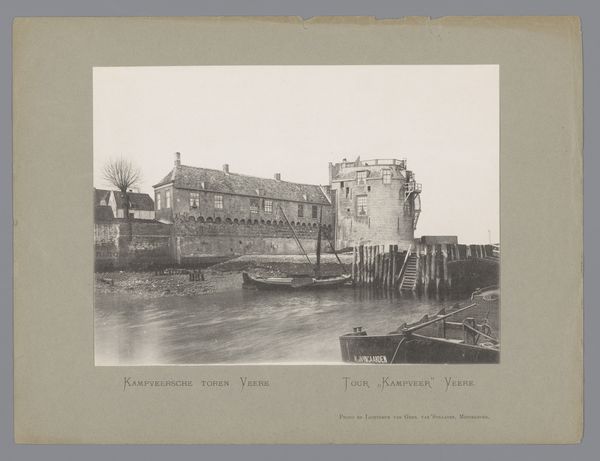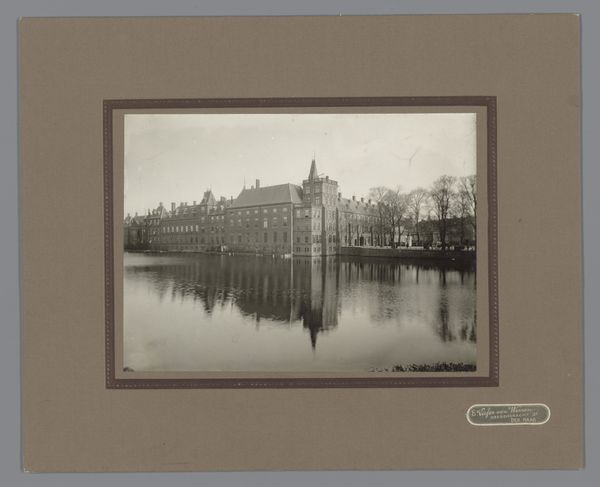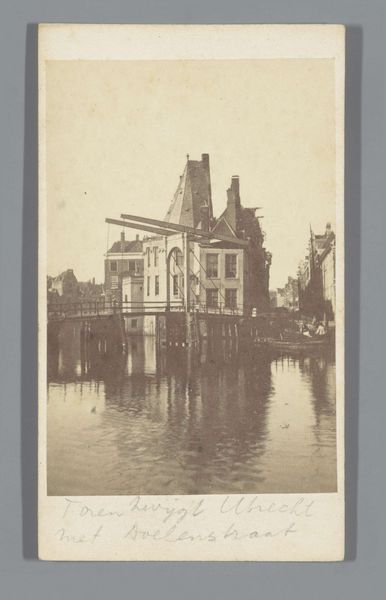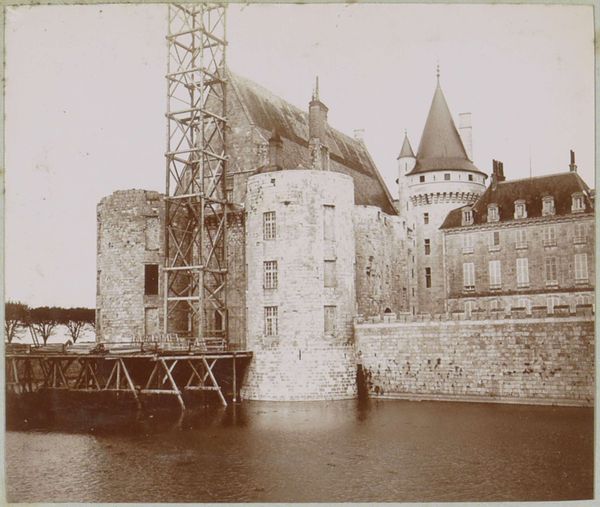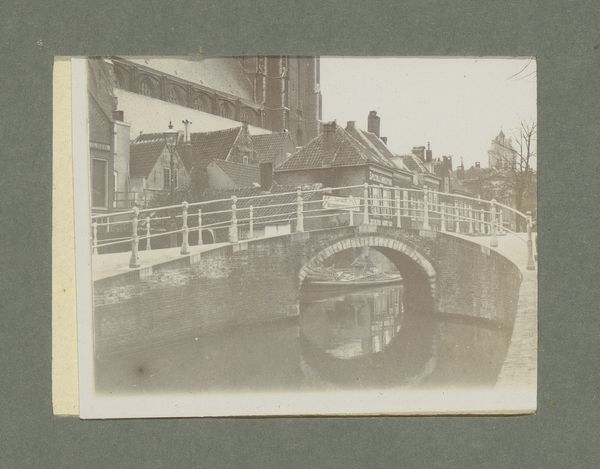
photography, gelatin-silver-print
#
dutch-golden-age
#
photography
#
gelatin-silver-print
#
cityscape
#
modernism
#
realism
Dimensions: height 74 mm, width 99 mm
Copyright: Rijks Museum: Open Domain
Curator: Immediately, I am struck by the clarity. There’s something inherently beautiful about a well-executed gelatin-silver print, especially when capturing architectural details like this. Editor: We're looking at “Gezicht op de hoofdtoren te Hoorn,” an interesting cityscape photograph by G. Hidderley, dating roughly between 1920 and 1940. This photo encapsulates the transition from pictorialism towards modernism in Dutch photography. Curator: Transition is exactly what I see, with the texture of the brickwork and reflections on the water emphasizing the interplay between light, shadow, and raw materials. This feels very tactile. Is Hidderley known for prioritizing the materiality of the print? Editor: To an extent, yes. This work and others reveal how the socio-political climate of the interwar years in the Netherlands began influencing artistic expression and vision. While Hidderley's artistic intent isn't explicitly stated, the very act of documenting public structures like the Hoofdtoren suggests a commitment to preserving communal memory and engaging with questions around the urban landscape and societal progress during a period of great change. Curator: So you're saying this emphasis on public architecture could be seen as part of a broader discourse surrounding urban identity at the time? The creation of an easily reproducible medium suggests a wider, public facing distribution. Editor: Absolutely. Photography's ability to disseminate images rapidly democratized access to these urban scenes. It fueled public debates on urbanization and its impact. Consider how these photographs circulated – newspapers, postcards, public displays. They actively shaped public perception. Curator: It's impressive how much can be unearthed from what appears to be a simple photograph. Editor: Indeed, the political context in which this image emerged can allow us to challenge established concepts of art by shifting our perspective toward the social dynamics of photographic practice. Thank you for exploring that context, what a worthwhile conversation! Curator: My pleasure! Considering it in its time shifts it from pure object to historical marker.
Comments
No comments
Be the first to comment and join the conversation on the ultimate creative platform.
